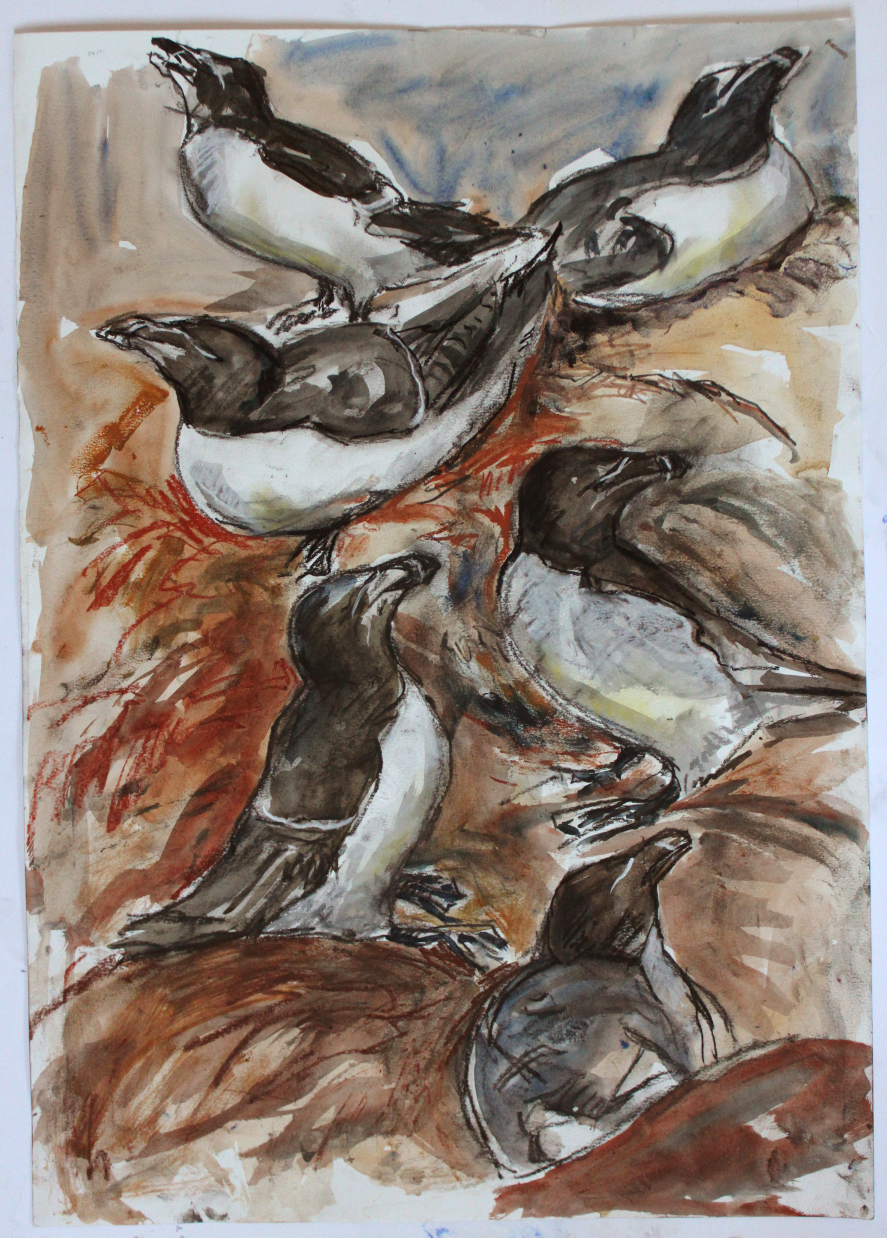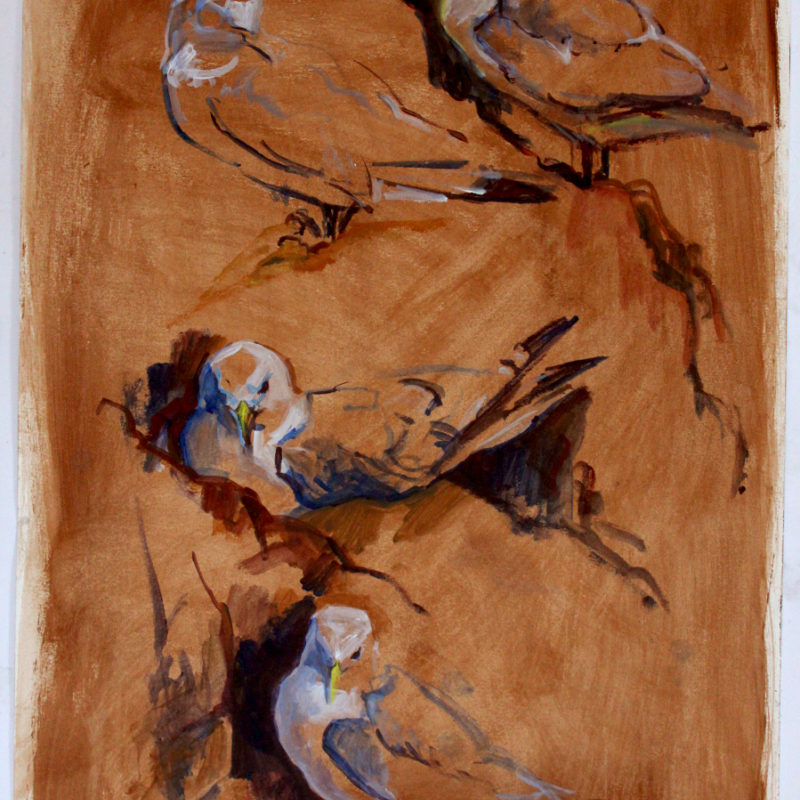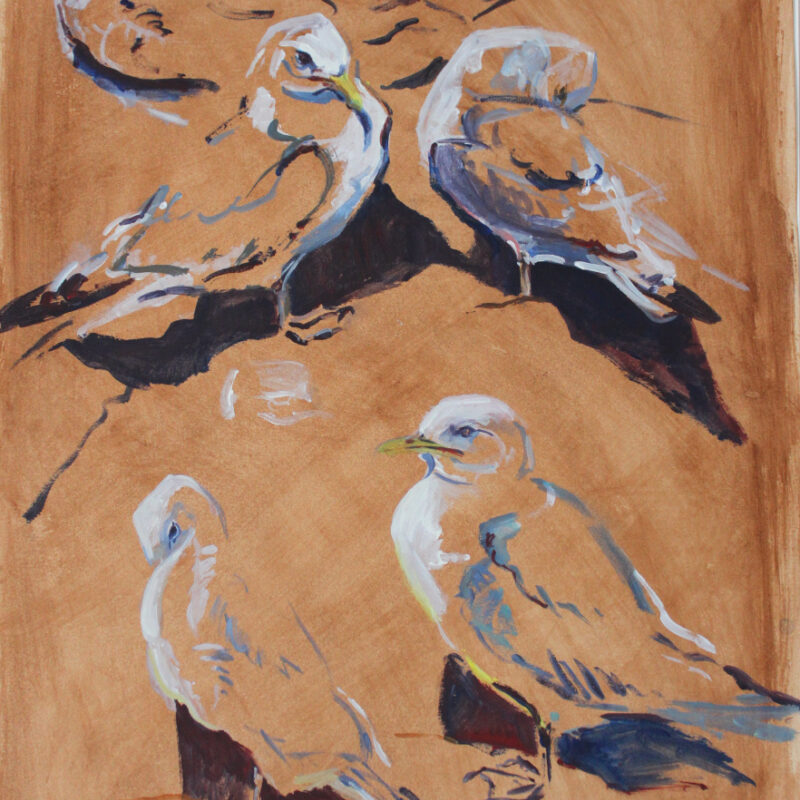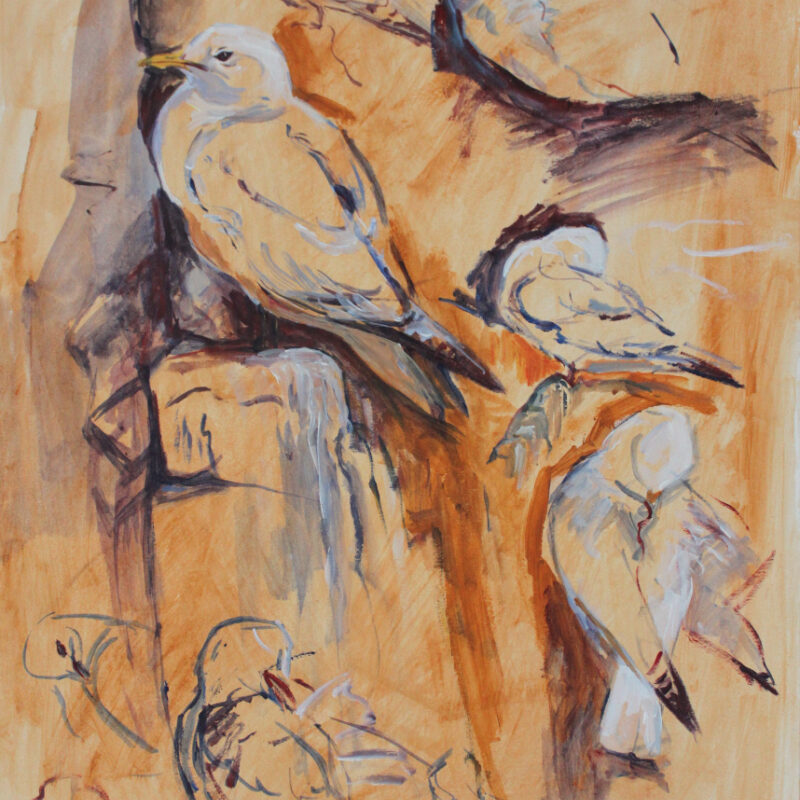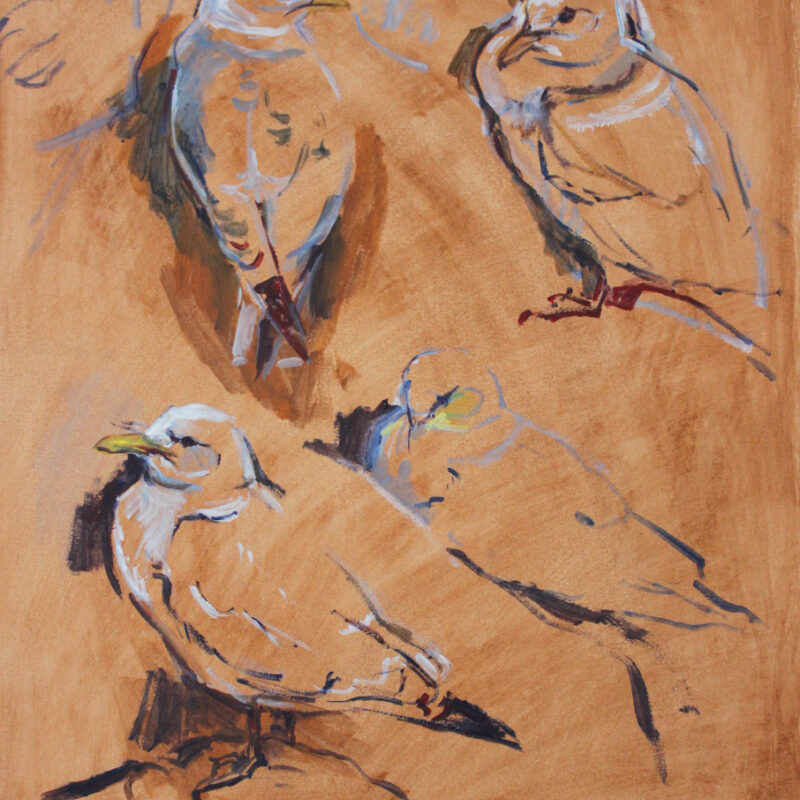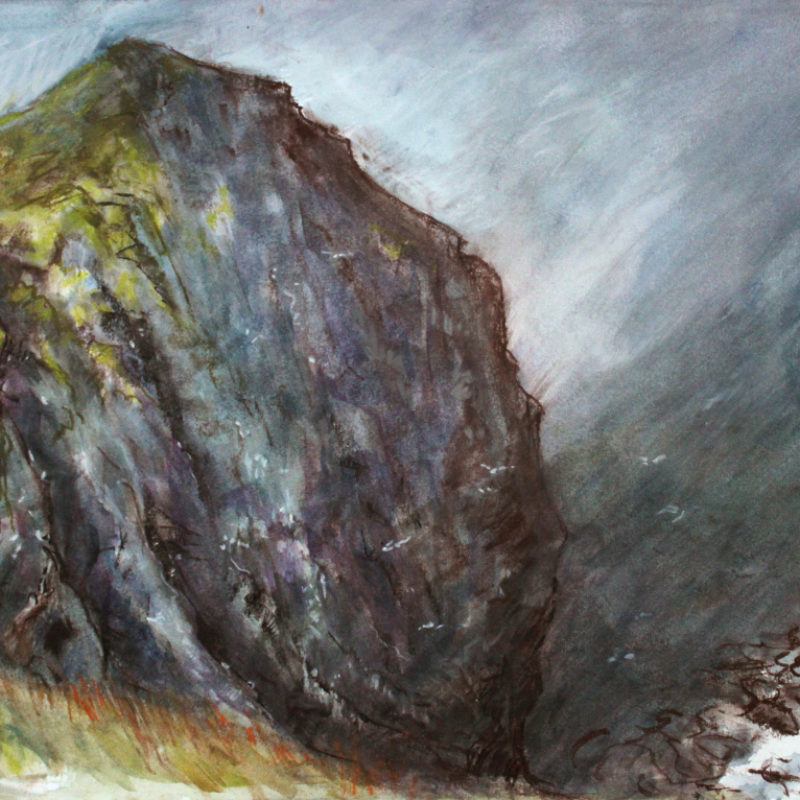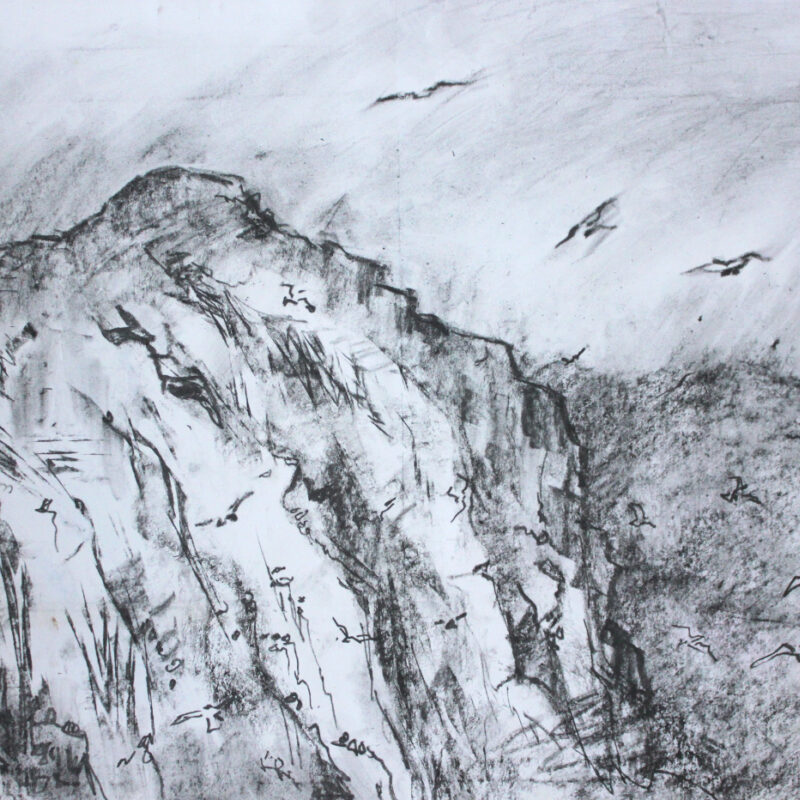Sandra Fernandez – Seabird Drawing Course 2019 Bursary Report
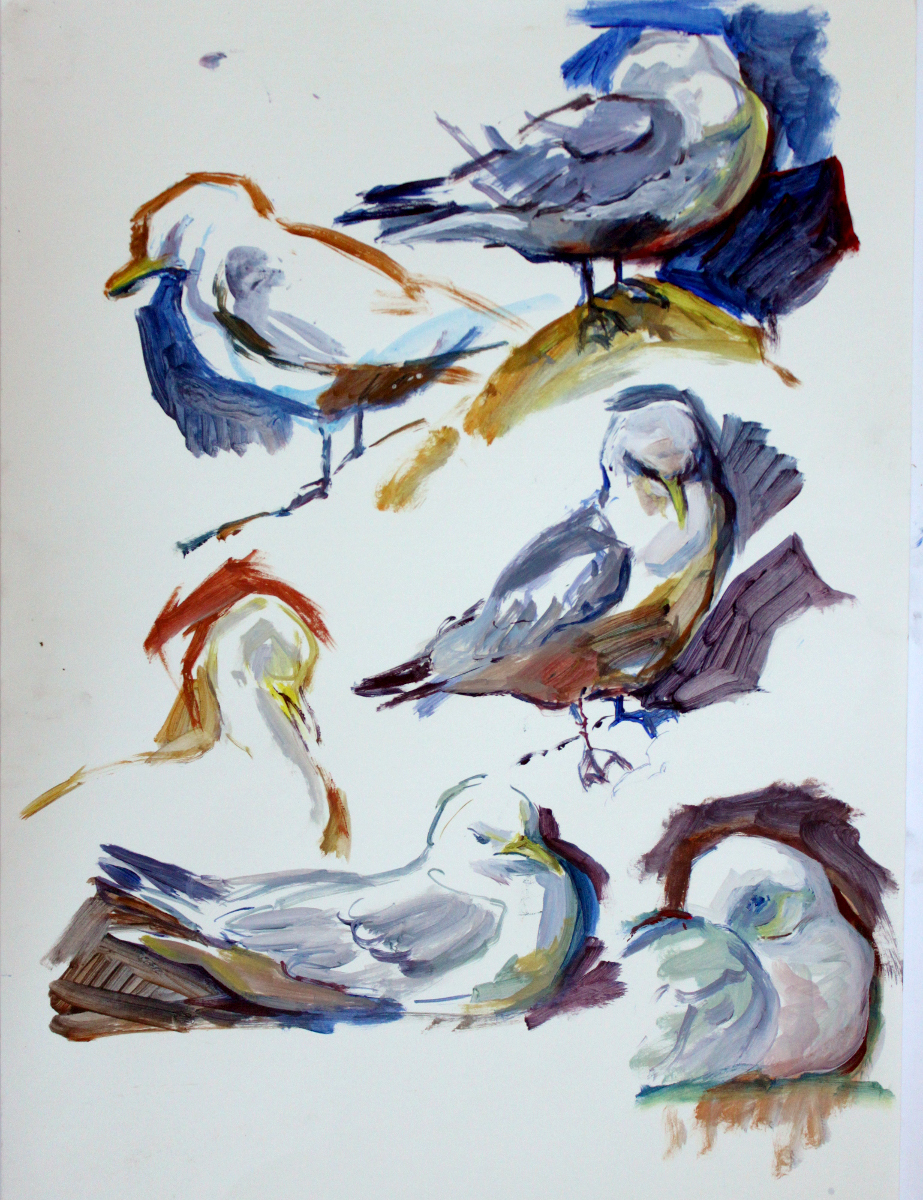
One of the attractions of the course was to go from fairly sedate subjects to the raucous frenetic activity of large seabird colonies on Scotland’s rugged east coast!
Sandra Fernandez
Acceptance on the John Busby Seabird Drawing Course was for me the official start on my journey from botanical illustrator to wildlife artist. I had started moving away from studio-based botanical still-life towards painting and drawing from life, my subjects being the common or garden birds living in the tranquillity of the agricultural landscape of Kent. One of the attractions of the course was to go from these fairly sedate subjects to the raucous frenetic activity of large seabird colonies on Scotland’s rugged east coast! I would also be taught by and work alongside fellow artists with years of experience in the field whose advice and guidance would be invaluable in advancing my work further. In both respects, the course lived up to all my expectations and more.
A very memorable day for me was drawing the birds on the rocky outcrops of St Abb’s Head, where the weather changed dramatically from slightly overcast to strong winds, pelting rain and thick mist, which slowly descended on us obliterating our view and in some cases our work. Strangely, this proved exhilarating as it forced me to stop worrying about my work and paint as quickly as I could to capture the changing light and atmosphere on the imposing rock face in front of me. The rock was set against an ever-darkening sky speckled with the tiny white flashes of birds flying past seeking refuge. Normally I never mix my mediums, but the speed in which I needed to capture what I was seeing led me to combine my watercolours with pastels. A combination which I felt achieved the dramatic image I wanted to create and is something I will use in the future.
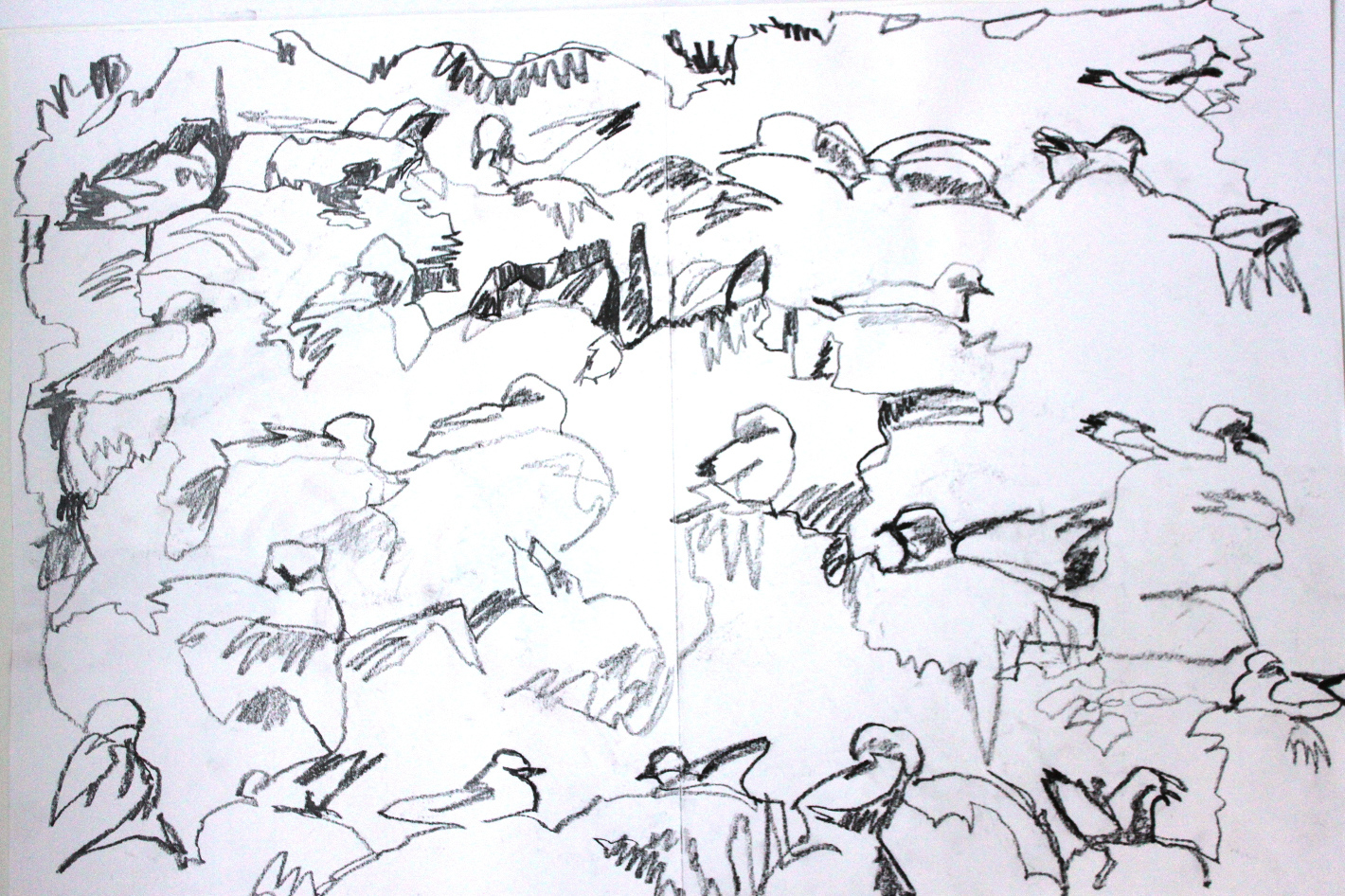
The drawing exercises we were given on the course opened my eyes to the limitations of my mark making and made me realise my need to develop this further to enrich my work. One exercise required us to draw with a continuous line looking at our subject but never at the paper. I was faced with a wall of nesting Kittiwakes at Dunbar harbour. The resulting sketch looked very strange but captured more of the feel of the scene with its different levels of nesting birds than my pages of single studies. Sketching like this from the start will help me to quickly establish a variety of compositions before getting too involved in the detail of a scene and is very useful as a warm-up exercise before embarking on a sustained painting.
Students and tutors alike shared ideas, materials and tips on how to cope with painting birds in an ever-changing environment. Working alongside my fellow artists and seeing their unique approaches and use of different materials in their work was enlightening and encouraged me to try painting on site directly in brush with acrylics, in lieu of my usual pencil and watercolour approach. This pushed my work into a new direction and led me to be more expressive with my line and use of colour.
While some aspects worked, others did not, however, the John Busby Seabird Drawing Course was created to push artists’ creative boundaries and, as with me, sow seeds of inspiration to cultivate long after the course had ended as I progress on this new artistic journey to draw birds in their natural environment.
